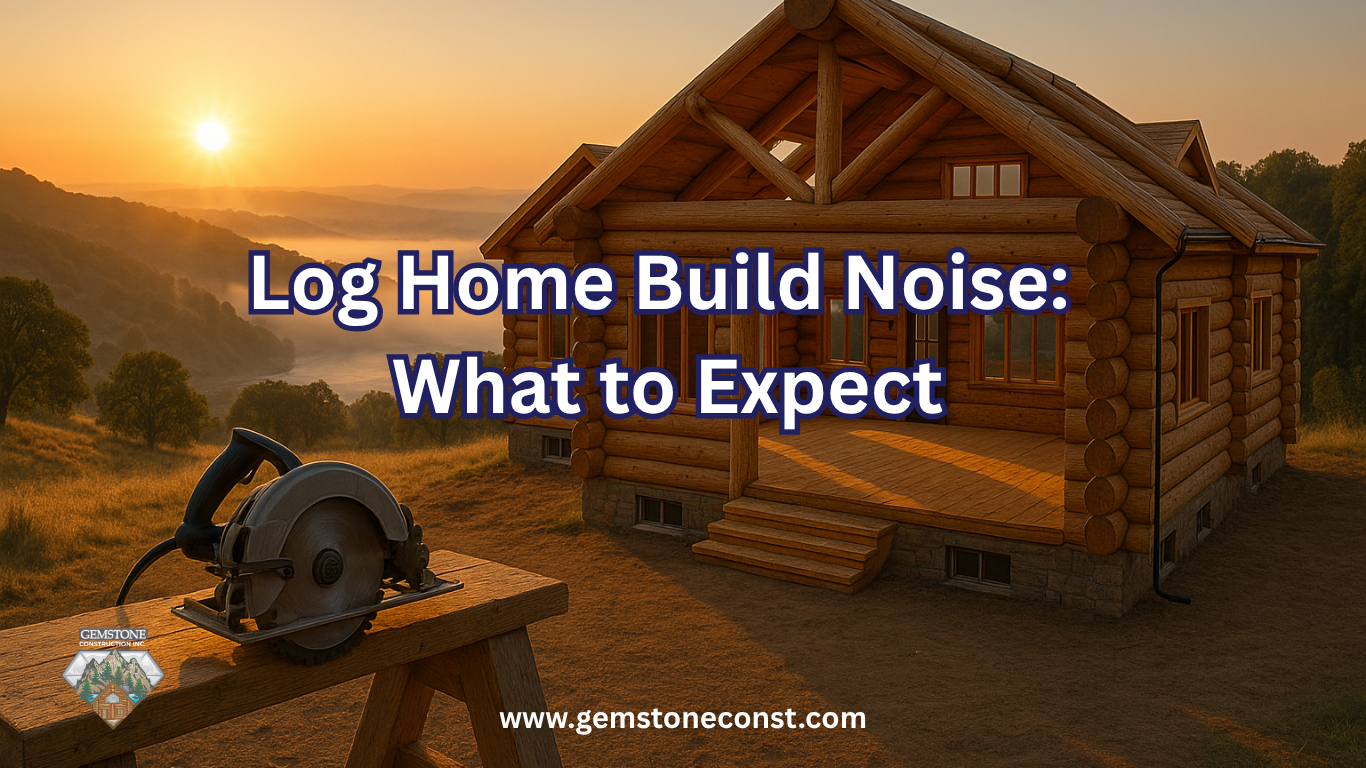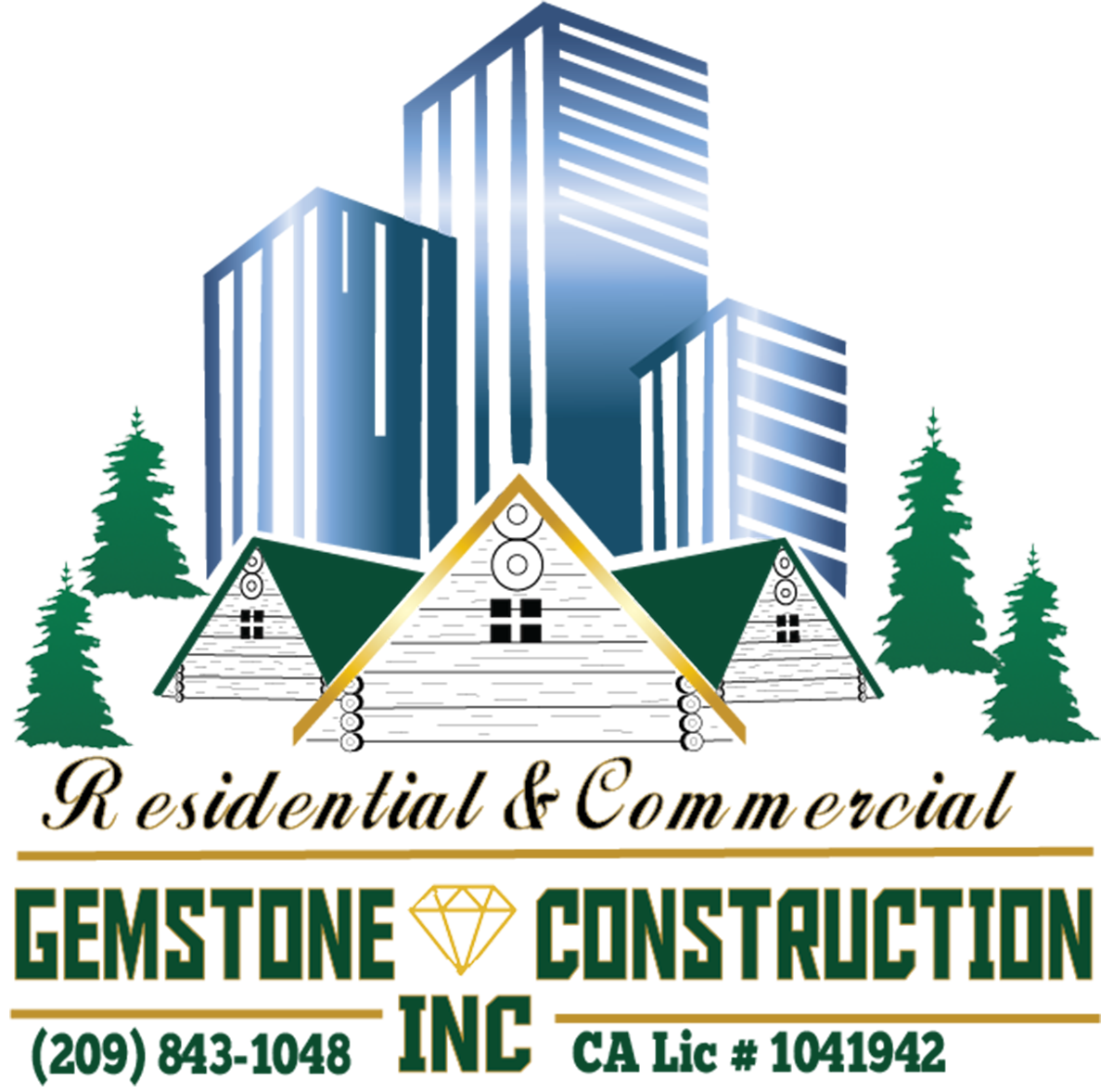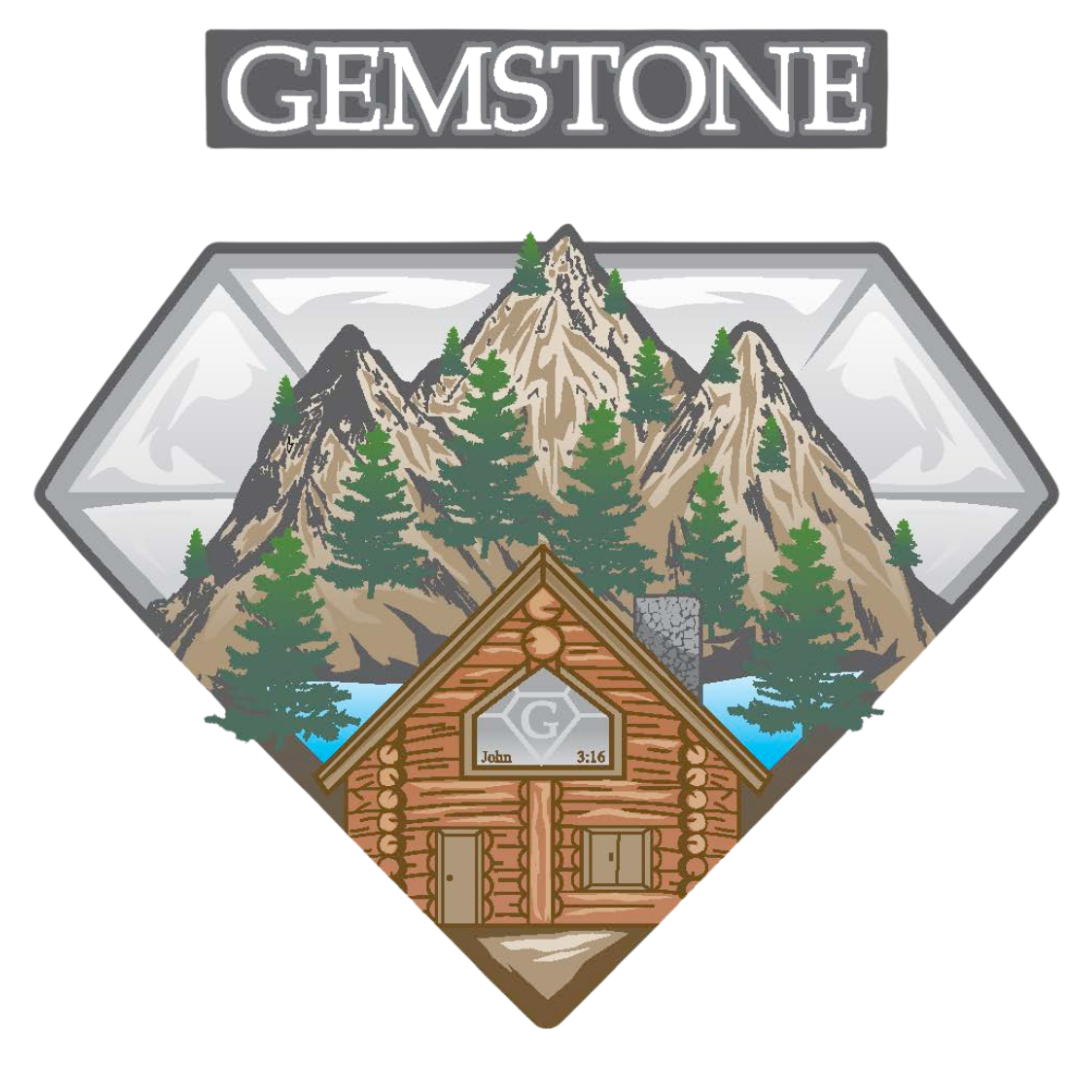GemStone Construction Blog
Is Log Home Construction Noisy in Northern California?
August 1, 2025 | Sacramento, CA | USA

Log cabins rise on cedar and hardware, so some racket is part of the journey. But how loud, how long, and at what hours? This FAQ answers the questions Sacramento-area owners search for most. We’ll start with a quick primer on why job-site sounds spike, then dive into detailed answers—each one showing how careful planning keeps the rumble short-lived. If you’ve already skimmed our lot-prep stage guide, you’ll see how that groundwork feeds directly into quieter, faster framing once the first log drops.
What Creates the Sound on a Cabin Job-Site?
The loudest tools appear during exterior work. Chainsaws trim log ends, and impact guns drive lag screws while walls stack—peaking near 100 dB at the source, equal to a lawn mower. Unlike stick builds that need constant skill-saw cuts, many log components arrive pre-cut, so onsite sawing is limited to fitting and touch-ups. After the roof seals, insulation and fresh wood absorb echoes, dropping most tasks to background hums.
Timing matters as much as tool choice. Sacramento counties allow construction noise from 7 a.m. to 7 p.m., but Gemstone Construction usually starts loud work at eight. That later launch keeps neighborhood harmony and lets loud framing finish before school pick-up. Afternoon slots fill with quieter layout checks, staining, or hardware tweaks. Predictable windows mean less surprise for neighbors and smoother inspector visits.
Log Cabin Build Noise FAQ
How loud are the main tools, really?
Chainsaws at full throttle hit roughly 105 dB at the operator’s ear. One hundred feet back—the average distance to a neighbor’s porch—the level slumps to the mid-70s, about city-street chatter. Impact guns top out around 95 dB up close, dipping under 70 dB beyond the fence. OSHA tags 85 dB as the eight-hour exposure limit. Crews wear protection on site, but walls, trees, and distance shield the block next door.
Noise bursts come in spurts. A saw hums for 20 seconds, goes silent while a worker measures, then fires again. Forklifts moving pre-cut logs idle at 80 dB—quieter than a vacuum—and the entire shell-stack phase often wraps in three to five workdays. Interior work trails off to normal conversation levels, letting remote workers skip headphones and simply close a window when a compressor cycles on.
Will early-morning work upset my foothill neighbors?
Most crews honor county quiet hours, but Gemstone Construction adds elbow room by firing up heavy gear at 8 a.m. sharp. That buffer lets commuters clear out, garbage trucks roll through, and toddlers finish cartoons before any nail gun pops. Loud exterior tasks cluster into late morning; after lunch, teams switch to layout checks and insulation baffles that seldom rise above 70 dB at the property line.
Communication is the real peacekeeper. A driveway sign lists working hours and a direct phone number under our neighborhood courtesy policy banner. One call solves a problem before it blooms on social media. Crews also follow a “quiet half” rule—never run loud gear more than 30 minutes without a break—which builds natural lulls neighbors appreciate. Friday sweeps clear stray gravel, proving respect louder than any promise.
Does prefab milling actually cut on-site noise?
Absolutely. Precision-cut walls leave the mill with window bucks, conduit runs, and beam pockets already routed, slashing saw time on site by about 60 percent. Forklifts and impact drivers replace two-stroke chainsaws; the former idles near 80 dB, the latter peaks at 90 dB right next to the operator but fades below 70 dB at the lot line. Two “set” days replace a full week of cutting chaos.
Prefab meshes with early design planning choices: pre-cut electrical chases mean no noisy retrofits later, and tight joinery shortens compressor cycles. Less sawing equals less dust, quicker cleanup, and fewer decibel spikes—a win for owners working from home and for neighbors enjoying Saturday cookouts.
What happens to noise once crews move indoors?
The cabin itself becomes a sound blanket. Log walls, fiberglass batts, and tongue-and-groove ceilings soften nail-gun pops to muted clicks. Finish carpentry uses battery brad nailers and low-RPM sanders that hover in the mid-80s at the source and under 65 dB five steps away. Paint sprayers swap roar for a gentle hum now that permanent power feeds the panel.
Outdoor noise shrinks too. Deck crews rely on cordless drills; metal-roof installers schedule panel fastening during mid-morning when neighbors are at work. Generators shut off once SMUD energizes the temp pole, and the only steady sound is a small fan drying fresh stain—a quiet reminder that early drainage and pad-raising steps keep walls dry long after the tools fall silent.
Cost Check & Your Next Move
Smart noise management starts with smart prep—soil tests, tree rules, driveway crowns—all covered in our earlier lot-prep stage guide. Want a budget snapshot? Pop your cabin size, finish level, and extras into Gemstone Construction’s free cost calculator, then call us to get started on a build plan that keeps progress high and decibels low.
About Gemstone Construction
Gemstone Construction is a premier custom home and commercial building contractor serving Northern California, including the Sacramento area. Specializing in
custom log homes,
luxury home builds,
residential metal building construction, commercial construction and
commercial metal building construction. We bring craftsmanship, attention to detail, and personalized service to every project. From designing dream homes to building cutting-edge commercial spaces, our dedicated team ensures that each build reflects our clients' unique vision and exceeds expectations. Trust Gemstone Construction to transform your ideas into reality with integrity and excellence.
Learn more about Gemstone Construction

Contact Information


